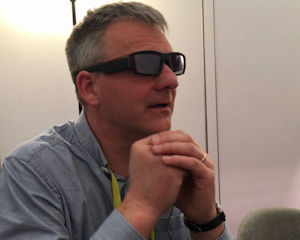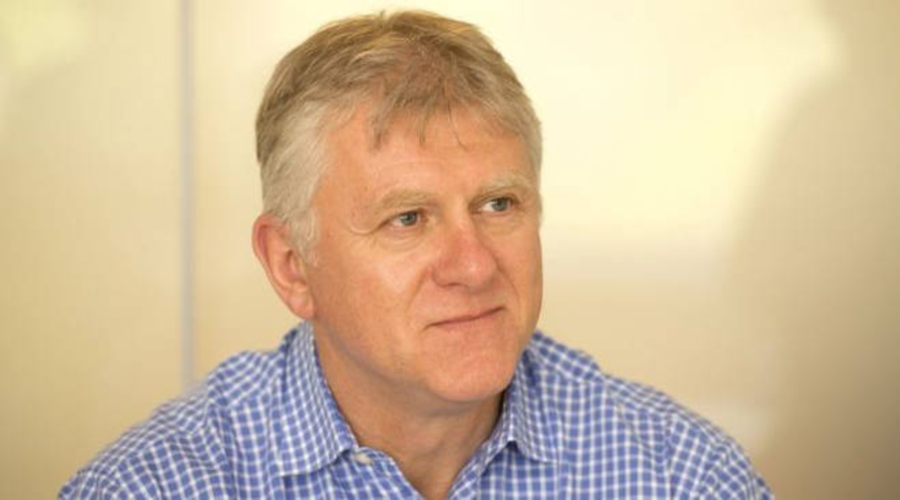Come back to this page to read articles by important people and personalities in the world of Welsh television.
‘Reflecting the UK’s Indigenous Diversity’
by Ian Jones – CEO S4C (photo: BBC)
True representation of our diverse society in the media is, I hope, a fundamental principle that we can all agree on. As an industry we may not be there yet, but the good will and endeavour we see in the media is great to see.
The “Creative Diversity Network” as a forum offers a huge opportunity to raise awareness about equality and diversity in broadcasting in the UK, and to share good practice in employment and production matters - all of which is absolutely essential.
However, it is important for us to see diversity not only through the prism of what is provided in English, but also through what is provided in “other languages”, which reflect how some UK citizens live their lives. So I would argue that diversity in the media also means serving populations sufficiently through their own language, the language which is a part of their everyday life, and which is a part of their history and culture. And this becomes essential when it comes to “public service content”.
It was just over 35 years ago when the Government of the day, a Conservative government as it happens, made the historic decision to create the UK’s Welsh language public service television broadcaster.
The then Home Secretary, Willie Whitelaw, described the decision as “an investment in social harmony”, recognising as he did, the need to provide a relevant, modern media service to the public in the early 80s.
‘Relevant’ in this case meant a Welsh language TV service, a service in the language of choice for 20% of the population of Wales who speak Welsh, UK citizens, whose culture was a UK culture, and whose language was, and is, a living and vibrant indigenous UK language. Thus, in 1982 S4C was launched. Now you can already tell from that potted history that it’s clear that S4C’s very existence is in itself an exercise in diversity, because what has been achieved is that in S4C the UK has a service that not only gives a voice and a platform to a minority community, it also ensures that people from that background have been given a pathway via which they can reach for and achieve “success” on a domestic and international stage.
And, you know, it is important to note that diversity in broadcasting means something else too. Diversity means “plurality” and “competition”.
I won’t pretend to speak for all nations of the UK, but in Wales, Plurality and Competition go to the heart of the challenge for public service broadcasting as a whole.
Wales is not really that well served in general media terms, and our underdeveloped media industry has contracted over recent years. This is not new news at all. And I guess that’s a good job, because if it were new news there is a good chance that many people in Wales would not get to hear about it, or potentially hear one version of it!
But plurality in the media must be seen as a ‘cross-cutting issue’ – not only affecting news and current affairs.
S4C is a key component in Wales’ current levels of plurality, but as we look to the future, it is incumbent on Government at some level to make a call regarding how plurality can be boosted, whether we should avoid an over-dependency on one big player and what role government could play?
So if that is the current landscape, how do we move forward, to improve that position?
From my point of view, it is all about looking at what is available in terms of media provision today and saying, whatever your background is, wherever you are from, whichever of the UK’s languages you speak, you will not be left behind.
What that means in practice for us at S4C is that we want to ensure that audiences can receive public service media in Welsh, and not on our terms, but in whatever way audiences are choosing to consume their media content. It is about creating clear offerings for specific audiences, and ensuring that we signpost clearly what services are available for those audiences and how they access or interact with them.
What public service broadcasters have done in the past, is identify an audience and launch dedicated digital TV services in order to super-serve that audience demographic.
This is essentially how UK PSBs have insulated themselves to an extent against the dilution of their reach in a far more diverse field of channels and services since digital switchover. Except that nowadays we don’t need to focus on TV alone. TV is one part, all-be-it a vital part, of media provision in a landscape in which the audience is becoming increasingly attracted to a variety of digital, web-based, TV and social media services.
So for us at S4C it’s about harnessing the appropriate platform for a specific audience. It is dependent of course on us being allowed to supply our services in different ways – as opposed to “a TV service” which is currently specified in our remit. That is an issue which needs to be remedied. As, let’s face it, the only Welsh language PSB, it is our job to ensure that our Welsh language content is available to as many people as possible to view any time, any place, anywhere.
If a section of the potential viewing public is not viewing content on TV as much as it once did, then it is up to us to find where those people are now spending their time viewing content, and ensure that Welsh language content is part of the menu from which they will habitually choose. And it is worth noting that the argument for ensuring public service content prominence, on online platforms, on SMART TVs, is undeniably strong.
So, I would say yes, the great challenges in terms of representation of our diversity, lie in two main places:
Firstly of course, continue to work towards further balance in terms of how our diverse society is represented on screen and behind the camera in production teams in English language content.
But secondly, we must remember that part of the nature of our diverse society is that some UK citizens have the democratic right to expect public media services, a full range of public service media, in their own indigenous language, and not diluted second class services due to limited resources and continual budget cuts. That’s plurality in its purest form!
As an official language of these islands, the Welsh language would certainly fall into that category. As a broadcaster we would have to ask why shouldn’t we be able to provide services across any popular platforms, and of course have the resources and regulatory flexibility needed to be enabled in that regard.
But, from the perspective of one of the UK’s linguistic minorities, not only should our diversity be reflected in the media, it is equally important that steps are taken to re-inforce our diversity as a Society, safeguard the diversity we have, rather than risk social standardisation.
I for one am glad to hear government support for diversity and ensuring that it works for all parts of the UK.
Because if our diversity is not valued, cherished and protected, the logical outcome is that there may be no diversity to reflect in future – and that would make for poorer media content, poorer shared experiences for us all and, let’s face it, a far poorer UK.
Ian Jones – CEO, S4C
![]()

What’s That Coming Over the Hill?
Nick Skinner, of BBC Wales' Innovation Lounge, reports for RTS Wales on his recent visit to the Consumer Electronics Show in Las Vegas.
The world’s biggest technology fair had plenty to say about the future of broadcasting.
Firstly, the TVs of the future are 4k. And all the main manufacturers are adopting High Dynamic Range as standard - which allows more detail in bright and dark areas. As far as TV-makers are concerned HD is a thing of the past. Consumers will who have spent a small fortune on 4K HDR TVs will want something to watch in 4K HDR!
The TVs themselves were incredible. Some were as thin as glass. Others were flexible, curved, or simply enormous. LG’s spectacular tunnel of telly was the most impressive.
Laser projectors were also producing good looking pictures in varied light conditions. The price-tag was also impressive – currently starting around $15,000. No doubt that will fall!
Virtual reality and 360 video was everywhere. Cameras and headsets are getting simpler, better and cheaper. Small cameras to snap onto a phone cost just $250. Expect to see them in a playground near you soon!
For the professional film-maker there was a dizzying array of 360 cameras. Some of the most impressive were so-called “stereoscopic” cameras, which give depth to 360 video by looking through two lenses rather than one.
 There were some impressive Augmented Reality glasses on display too. These allow you to watch 360 video without cutting yourself off from the world in a pair of goggles. They can also superimpose writing or graphics on the real world.
There were some impressive Augmented Reality glasses on display too. These allow you to watch 360 video without cutting yourself off from the world in a pair of goggles. They can also superimpose writing or graphics on the real world.
Some successful models use just simple functions – like projecting a cyclist’s speed onto her glasses. Other companies - like Microsoft, Vizux (as modelled by me, left), and ODG - all had more ambitious glasses on display allowing full internet access and potentially a whole new world of connectivity.
The headlines at the show were grabbed by the self-driving cars – which could make a debut on the roads in a few years’ time. Many companies are rethinking the car interior around the fact you no longer need to concentrate on the road ahead. Interactive displays took pride of place – and drive time could eventually become TV time. Great for TV companies – not so hot for peak-time commuter radio shows.
As you would expect there was a plethora of more immediate innovations to change the way we make content. A device to track your camera shake so it can be removed in post-production got a lot of attention. I was also impressed with one large telephoto lens for a mobile phone which gave great depth of field control – as well as the obvious zoom.
Those shooting on DSLR cameras will have spotted the Panasonic GH5 coming over the horizon. It was functionally very similar to a GH4 – so no steep learning curves. But it was the specifications and the 6x slomo which got people excited. You will be seeing them around quite soon!
Nick Skinner, Innovation Lead, BBC Cymru Wales
![]()

